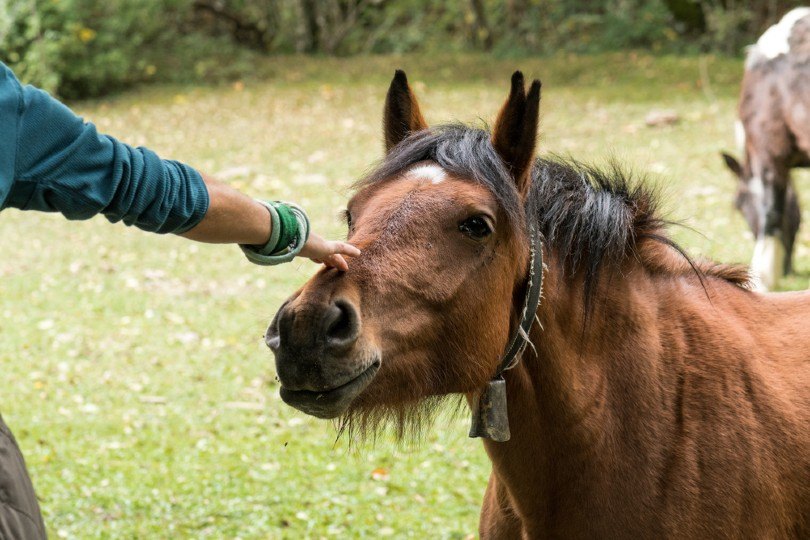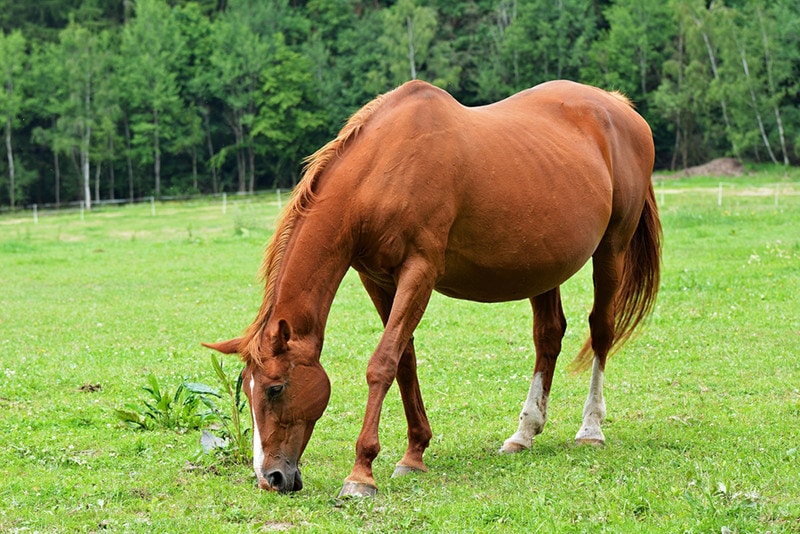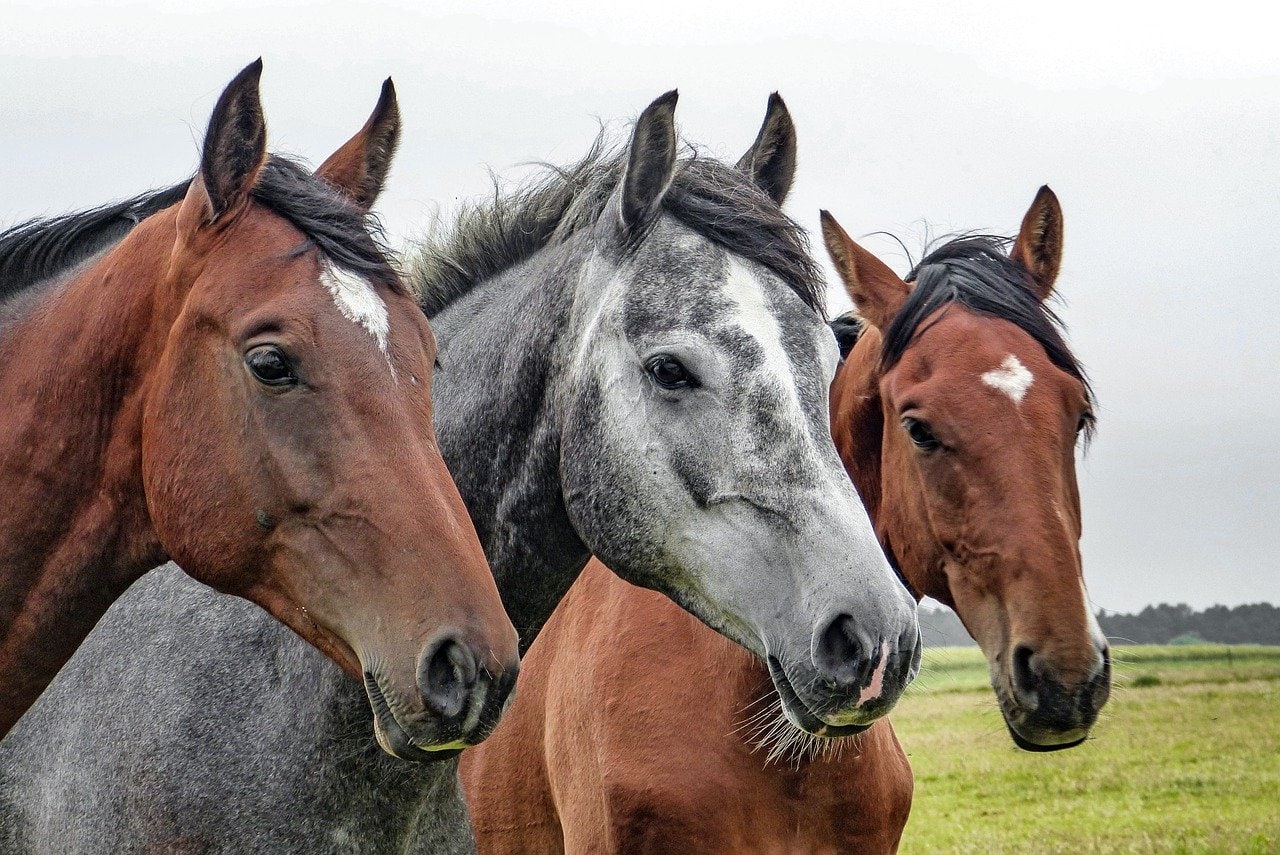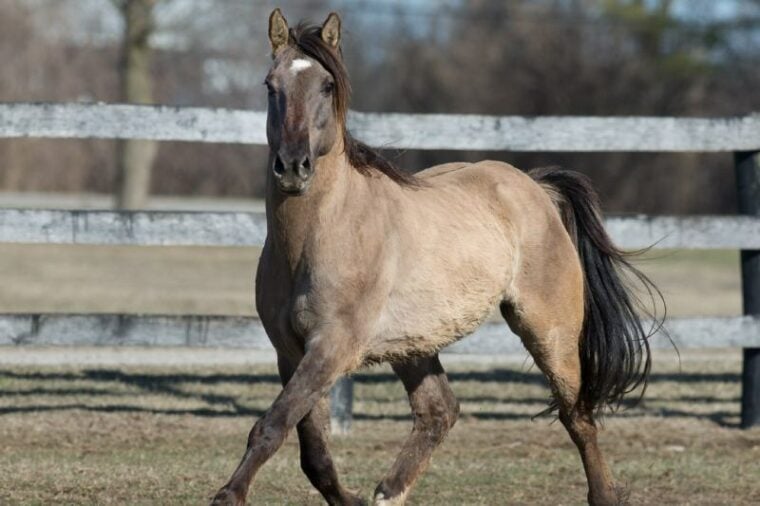
Click to Skip Ahead
The Kiger Mustang is a rare wild horse breed that originates from Oregon. They typically have dun markings, although some do come in solid colors. Kigers are so rare because they are only rounded up and offered for adoption once every 3–4 years. The wild population is rounded up and adopted to control the wild herd population, and the scarcity of the breed means that potential owners typically have to pay $7,000 or more to adopt one of these incredible horses.
Breed Overview
| Care Level: | High |
| Temperature: | Adaptable to most climates |
| Temperament: | Wild but obedient and trainable |
| Colors: | Dun, bay, black, roan |
| Lifespan: | 25–30 years, potentially longer |
| Weight: | 700–800 pounds |
| Height: | 13–16 hands |
The Kiger Mustang is one of the few remaining wild or feral breeds with Spanish heritage. There are only two official Kiger herds, with a total of around 100 horses. Although Kigers are put up for adoption, roundups only happen every 3 or 4 years, and a small number are adopted out, so there are likely only hundreds in existence today. Some horses have been bred from Kigers, especially in Spain, but these are rare and are not truly considered Kiger Mustangs.
Kiger Mustang Breed Characteristics
What Are These Horses Used For?
Kiger Mustangs are generally used as breeding stock and for pleasure riding, although they are also seen in a variety of equine competitions. They are considered highly intelligent animals who are willing and eager to learn. They can be trained quite easily and, despite being feral or wild stock, they tend to be friendly with people and do work well with livestock. Their stamina makes them suitable for pleasure riding as well as for herding. Their rarity, demand, and positive attributes also make them popular as breeding stock.
Because they can be trained and are athletic horses with lots of stamina, Kiger Mustangs do well in most types of competition. Although they are rare, you may see them entered into competition.

Where Did These Horses Originate From?
The Spanish brought their trusted horses to the New World in the 1600s. Native Americans and settlers, seeing the prowess of the original Iberian horses, claimed some for themselves. They were used to work farms and also as war horses. As new bloodlines were introduced in a bid to improve on the original Iberian horses, mustang herds became diluted.
Although it was widely believed that the original Spanish horses had become extinct by the early 20th Century, they were discovered in a small population at Beatty’s Bute near the Kiger Gorge. Genetic testing showed that these horses were descendants of the original Iberian mustangs. Two small herds were established in fenced Horse Management Areas, both of which are still in operation today.
Approximately every 4 years, several of the horses are put up for adoption to manage the wild population and to try and retain the dun markings and ideal physical characteristics of the herd. Adoption fees for the Kiger Mustangs that are released can reach as much as $7,000 or more, such are their rarity and popularity.
Temperament & Intelligence of the Kiger Mustang
The Kiger Mustang might be of wild horse stock, and it has the athleticism, hardiness, and stamina you would expect from such stock, but it is also obedient and intelligent. The Kiger is considered quite easy to train and it is an obedient breed. It isn’t afraid of hard work and relishes the opportunity.
Appearance & Varieties
Most Kiger Mustangs have dun coloring, although some do have solid colors. The breed can come in a range of sizes but is most commonly between 13.2 and 15.2 hands high. It will weigh between 700 and 800 pounds as an adult. It is a muscular-looking breed with quite a small head and curved ears.
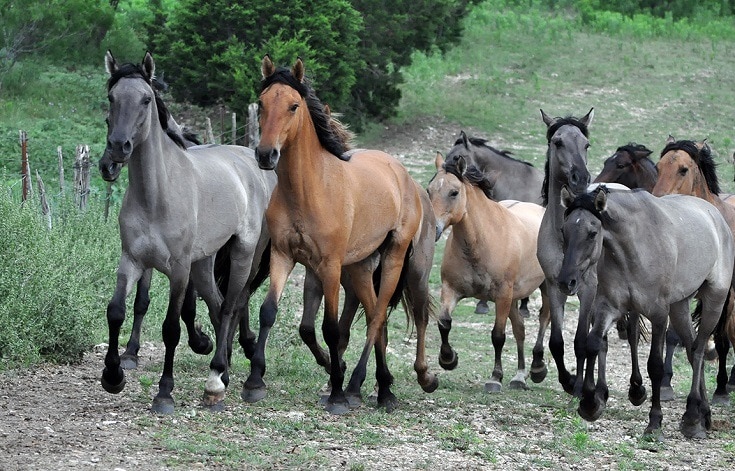
Things to Know When Owning a Kiger Mustang:
The Kiger is a feral horse breed. It can adapt to most moderate climates, although may struggle in extreme cold. It is hardy, strong, and athletic.
Habitat & Stable Requirements 🌾
Mustangs are used to open spaces and live in wild or semi-wild conditions. As such, they benefit from having open and wide stables with plenty of paddock space to charge around in. Although smaller than some other breeds, they are very muscular and can make easy work of short fences, so you need to install tall, reinforced fences to prevent escape.
Food & Diet Requirements 🥕
Feed hay and try to let your Kiger Mustang forage in paddocks and fields and always ensure that your horse has access to water. A single horse can consume as much as 15 gallons in a single day. Add a salt mineral block to the water to mimic the minerals that they would get from streams and waterfalls in the wild. Aim to feed approximately 2% of your horse’s body weight each day.
- Related Read: Best Treats for Horses – Reviews & Top Picks
Exercise 🐎
Kiger Mustangs need regular exercise. This can include running free in the paddock as well as riding and training.

Training 🐴
Consistent training and regular face time is important when owning a Mustang. These are feral horses and while they are considered obedient and can be trained, if you slack off, your Kiger will revert to its feral ways. Spend at least an hour a day, 5 days a week, working and training your horse.
Grooming 🧽
Although they do not have any specific grooming requirements, Kiger Mustangs do benefit from regular grooming. Ensure you groom at least once a week. Better still, groom before every ride. Not only will this ensure your horse is well groomed and healthy but it will also have them relaxed and ready for a ride. Regular hoof care is also important and can prevent lameness.
Lifespan & Health Conditions 🏥
The Kiger Mustang typically lives between 25 and 30 years, although some can live 40 years more in ideal conditions. There are no known breed-specific illnesses, ailments, or conditions associated with the Kiger.
Male vs Female
Generally speaking, males grow to be larger and stronger than females, but they can be more difficult to work, especially uncut males. Females are more level-headed and more likely to listen to training and instruction. However, every horse is different, and individual temperament is more important than breed or gender.
3 Little-Known Facts About Kiger Mustangs
1. Kiger Mustangs Are Very Rare and Expensive
Kiger Mustangs are reared on just two Horse Management Areas, and between these two ranches, there is a population of only around 100 horses. When the population increases, the extra horses are adopted out, maintaining the exclusivity of the breed. When the horses are adopted out, they can attract an adoption fee of $7,000 or more.
2. They Could Be the Last Remaining Wild Spanish Horse
The main discerning feature of the Kiger bloodline is that they are descended from wild Spanish mustangs brought to the U.S. in the 1600s. The modern Kiger is believed to be the last remaining wild horse with a Spanish bloodline.
3. They Can Come In Solid Colors
One of the physical attributes most often associated with the breed is the dun coloring. While it is true that most Kigers are dun, some do have solid colors and can come in a variety of different colors.
Final Thoughts
Kiger Mustangs are very rare and even when they do come up for adoption, you can expect to pay considerably more than the typical $500 fee it costs to adopt a horse, with prices reaching as high as $7,000 or more. Buyers are willing to pay this kind of fee for the breed not only for their beauty and heritage but because they are athletic, muscular horses with lots of stamina and are considered easy to train.
These attributes make the Kiger Mustang popular for pleasure riding, working livestock, and as breeding stock.
Featured Image Credit: Shawn Hamilton, Shutterstock


